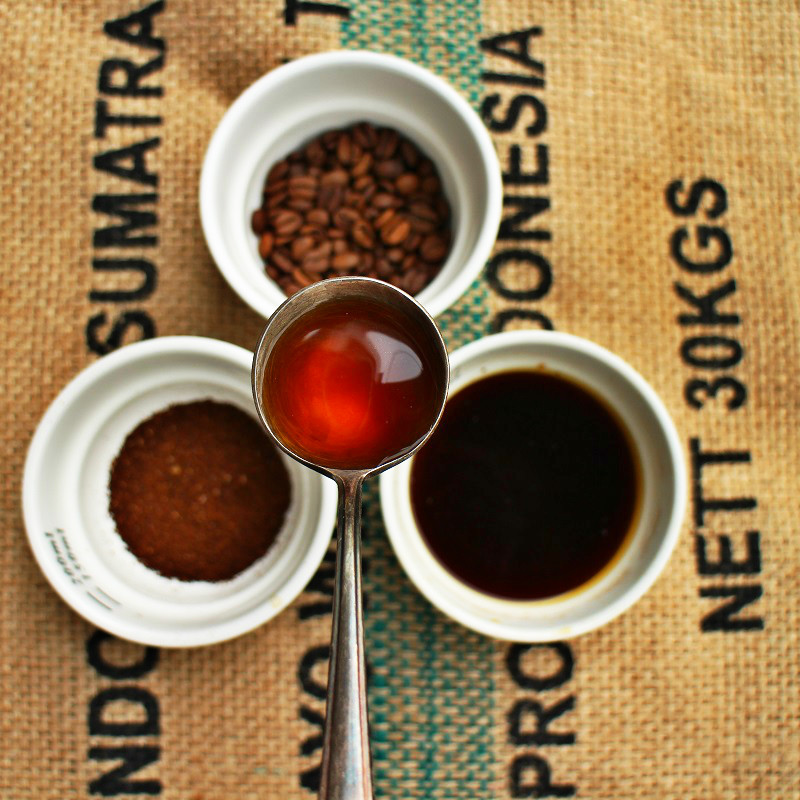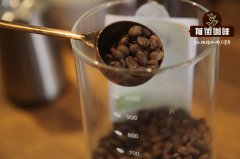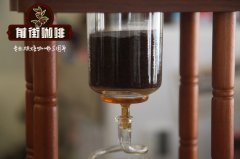Characteristics of Fine Coffee Bean Tonaga Toraja Coffee planting in Indonesia

Professional coffee knowledge exchange more coffee bean information please follow the coffee workshop (Wechat official account cafe_style)
Indonesia producing areas:
The Tana Toraja mountain area in southwestern Sulawi, Indonesia, is 1700 meters above sea level. It is an alpine volcanic terrain with sufficient sunlight, a large temperature difference between day and night, and a normal temperature of 24 ℃ ~ 25 ℃. High-quality Arabica beans are grown because of the volcanic weakly acidic soil in the fertile tropical highlands.
Toraja coffee beans are very similar in appearance to Mandheling coffee in Sumatra and are full of grains. It is handled by the traditional Indonesian Natural Process / Semi-washed method. The best Toraja coffee beans come from Kalosi, with an annual output of only 3000 barrels, each with a code, and each barrel of coffee beans carved by hand. It is the only handicraft in the world and is very expensive.
This coffee is full-bodied and rich, with a low sour taste with fresh earthy flavor and a long throat rhyme, challenging the taste buds of coffee glutton. Therefore, coffee is famous all over the world and has become a gift "tribute" for the Indonesian government to entertain the European Union.
Producing areas:
The Tana Toraja mountain area in southwestern Sulawi, Indonesia, is 1700 meters above sea level. It is an alpine volcanic terrain with sufficient sunlight, a large temperature difference between day and night, and a normal temperature of 24 ℃ ~ 25 ℃. High-quality Arabica beans are grown because of the volcanic weakly acidic soil in the fertile tropical highlands.
Toraja coffee beans are very similar in appearance to Mandheling coffee in Sumatra and are full of grains. It is handled by the traditional Indonesian Natural Process / Semi-washed method. The best Toraja coffee beans come from Kalosi, with an annual output of only 3000 barrels, each with a code, and each barrel of coffee beans carved by hand. It is the only handicraft in the world and is very expensive.
This coffee is full-bodied and rich, with a low sour taste with fresh earthy flavor and a long throat rhyme, challenging the taste buds of coffee glutton. Therefore, coffee is famous all over the world and has become a gift "tribute" for the Indonesian government to entertain the European Union.
Indonesia is the largest archipelago country in the world. Arabica tree species coffee was introduced and planted during the Dutch rule in the 18th century. The main producing areas are in Sumatra, Java and Sulawesi. Mantenin's deep, low-acidity and rich taste makes people call it the 'most important coffee in the world'. It is also the fourth largest producer in the world with an annual output of 7 million bags. Coffee is harvested twice a year in May-June and September-October respectively. Sumatra and Aceh have the largest production. The scale of the coffee farm is not about 1 ~ 3 hectares. Mantenin coffee treatment in Indonesia generally adopts semi-washing method. Coffee farmers harvest ripe coffee beans, remove the external peel and pulp but retain the thin film tissue on the coffee beans. After the process of soaking and fermentation, the unsound beans floating on the water surface can be removed, while the strong and sunken beans can be sunlit or directly to the ground with the surface film. Finally, a dryer is used to make the moisture content reach a unified standard. The most unique thing is to use parchment to cover coffee beans with a thin film to maintain a moisture content of 18%. Before shipment, the coffee bean surface film is polished and cleaned. The world calls this section of the special treatment method called Indonesian-style semi-washing method, large coffee processing plants can accurately control each treatment process, flavor and taste has a certain level. On the other hand, small coffee farmers treat raw beans in their own yard, and the flavor will vary according to the handling methods and skills of different coffee farmers.
The coffee produced in Sulawesi, Indonesia's third largest island, accounts for only 9% of Indonesia's coffee production every year. Coffee grows in the rainforest at 750-1500 meters above sea level. Most of the high-quality coffee is grown around the Toraja platform in the southwest. Tonaga is located at an altitude of 1500 meters above sea level on the equatorial belt shrouded with rain and clouds in the afternoon. Coupled with the fertile volcanic soil, these are the best natural climate and environment for coffee growth. Most Indonesian coffee is sold, sold and exported by local coffee companies. Direct Coffee is introduced to small-scale Binalestari coffee merchants in Sulawesi Tonaga. Coffee is several grades G1 in Arabica. The raw coffee beans show a long rice-shaped color of emerald green, which is different from the yellowish brown of gold Mantenin and Sumatra Manning (compared with photos on the blog), and there are fewer defective beans and unfermented white beans. It's a good coffee from a small manor that doesn't have a disturbing earthy smell. Is the world's largest archipelago country, as early as the Dutch rule in the 18th century, the introduction of Arabica tree coffee cultivation, the main producing areas are located in Sumatra, Java and Sulawesi Island, the production of Mantenin deep low acidity rich taste, let people call it "the most important coffee in the world", and the world's fourth largest producer has an annual output of 7 million bags. Coffee is harvested twice a year in May-June and September-October respectively. Sumatra and Aceh have the largest production. The scale of the coffee farm is not about 1 ~ 3 hectares. Mantenin coffee treatment in Indonesia generally adopts semi-washing method. Coffee farmers harvest ripe coffee beans, remove the external peel and pulp but retain the thin film tissue on the coffee beans. After the process of soaking and fermentation, the unsound beans floating on the water surface can be removed, while the strong and sunken beans can be sunlit or directly to the ground with the surface film. Finally, a dryer is used to make the moisture content reach a unified standard. The most unique thing is to use parchment to cover coffee beans with a thin film to maintain a moisture content of 18%. Before shipment, the coffee bean surface film is polished and cleaned. The world calls this section of the special treatment method called Indonesian-style semi-washing method, large coffee processing plants can accurately control each treatment process, flavor and taste has a certain level. On the other hand, small coffee farmers treat raw beans in their own yard, and the flavor will vary according to the handling methods and skills of different coffee farmers.
The coffee produced in Sulawesi, Indonesia's third largest island, accounts for only 9% of Indonesia's coffee production every year. Coffee grows in the rainforest at 750-1500 meters above sea level. Most of the high-quality coffee is grown around the Toraja platform in the southwest. Tonaga is located at an altitude of 1500 meters above sea level on the equatorial belt shrouded with rain and clouds in the afternoon. Coupled with the fertile volcanic soil, these are the best natural climate and environment for coffee growth. Most Indonesian coffee is sold, sold and exported by local coffee companies. Direct Coffee is introduced to small-scale Binalestari coffee merchants in Sulawesi Tonaga. Coffee is several grades G1 in Arabica. The raw coffee beans show a long rice-shaped color of emerald green, which is different from the yellowish brown of gold Mantenin and Sumatra Manning (compared with photos on the blog), and there are fewer defective beans and unfermented white beans. It's a good coffee from a small manor that doesn't have a disturbing earthy smell.
Qianjie coffee: Guangzhou bakery, the store is small but a variety of beans, you can find a variety of unknown beans, but also provide online store services. Https://shop104210103.taobao.com
Important Notice :
前街咖啡 FrontStreet Coffee has moved to new addredd:
FrontStreet Coffee Address: 315,Donghua East Road,GuangZhou
Tel:020 38364473
- Prev

What are the flavor characteristics of Indonesia's national treasure coffee beans Tonaga Toraja? The story of Indonesian coffee beans
Professional coffee knowledge exchange more coffee bean information please follow the coffee workshop (Wechat official account cafe_style) A hidden in the mountains of Indonesia's national treasure coffee beans [classic Toraja Tonaga] Sulawesi Sulawesi is also one of Indonesia's famous coffee-rich islands, with unique natural conditions, and it has a long history of growing coffee
- Next

How to make Indonesian toraja Coffee, how to make toraja coffee, how to drink Indonesian National Treasure toraja?
For more information about coffee beans, please follow the Coffee Workshop (official Wechat account cafe_style) Indonesia is made up of more than 17, 000 islands scattered over the equatorial volcanic belt and has fertile soil. Famous producing areas include Sumatra in the west, Sulawesi in the middle, and Java in the south. Coffee was made by the Governor of the Netherlands from Ma in India in 1696.
Related
- Does Rose Summer choose Blue, Green or Red? Detailed explanation of Rose Summer Coffee plots and Classification in Panamanian Jade Manor
- What is the difference between the origin, producing area, processing plant, cooperative and manor of coffee beans?
- How fine does the espresso powder fit? how to grind the espresso?
- Sca coffee roasting degree color card coffee roasting degree 8 roasting color values what do you mean?
- The practice of lattes: how to make lattes at home
- Introduction to Indonesian Fine Coffee beans-- Java Coffee producing area of Indonesian Arabica Coffee
- How much will the flavor of light and medium roasted rose summer be expressed? What baking level is rose summer suitable for?
- Introduction to the characteristics of washing, sun-drying or wet-planing coffee commonly used in Mantenin, Indonesia
- Price characteristics of Arabica Coffee Bean Starbucks introduction to Manning Coffee Bean Taste producing area Variety Manor
- What is the authentic Yega flavor? What are the flavor characteristics of the really excellent Yejasuffi coffee beans?

